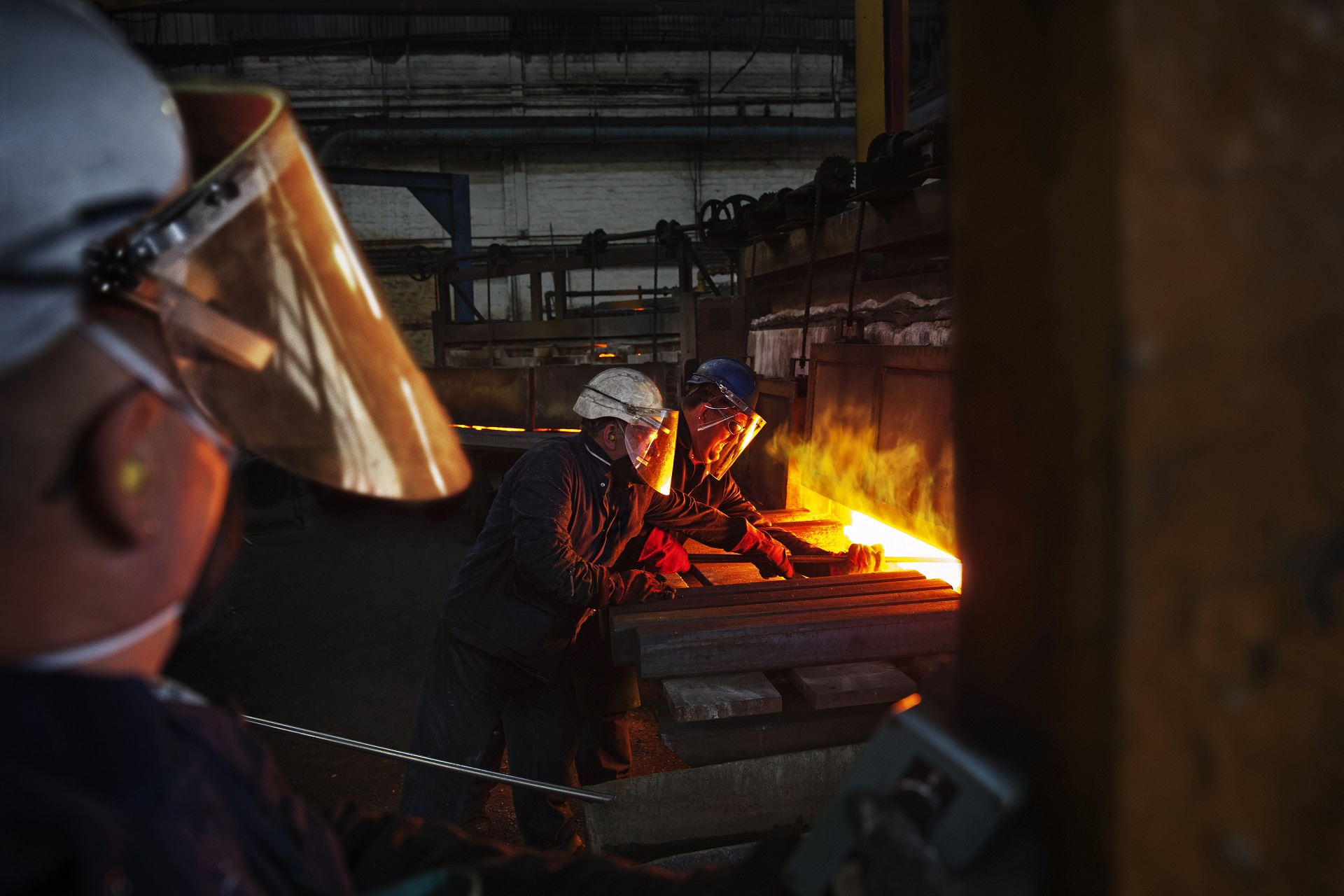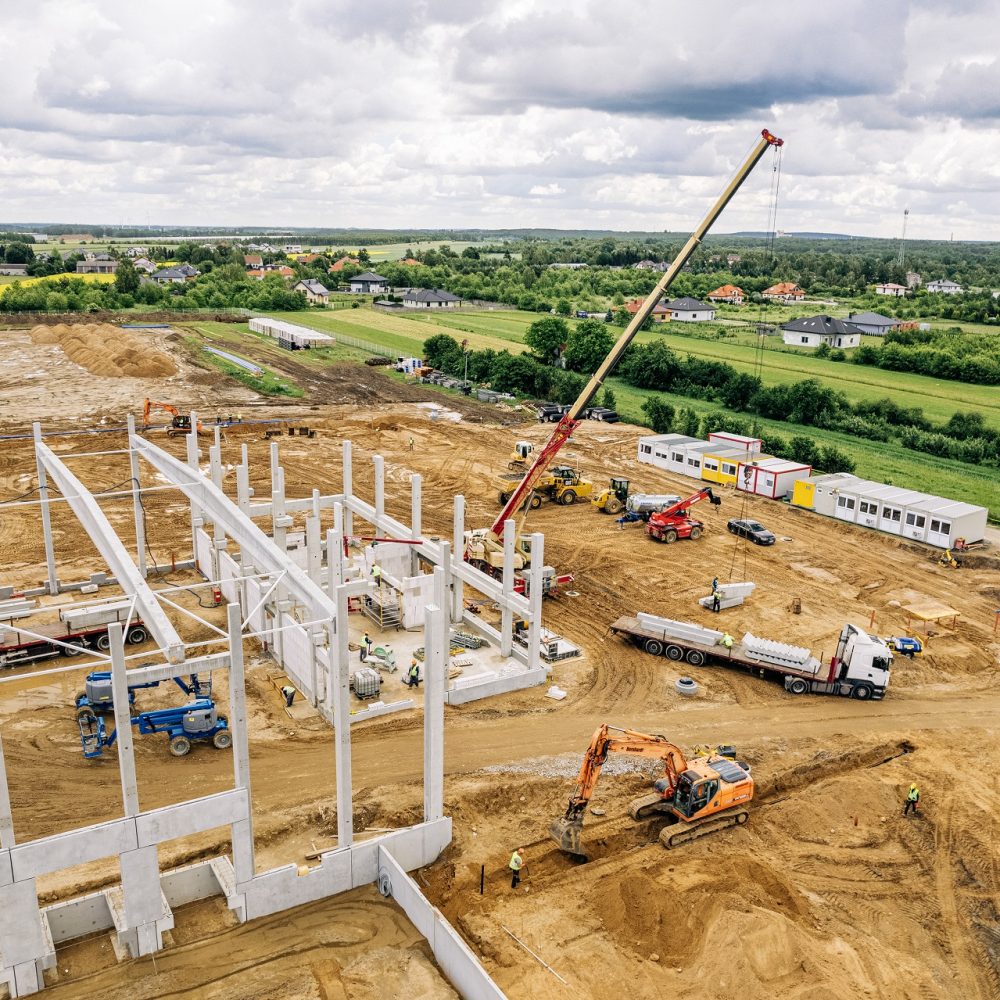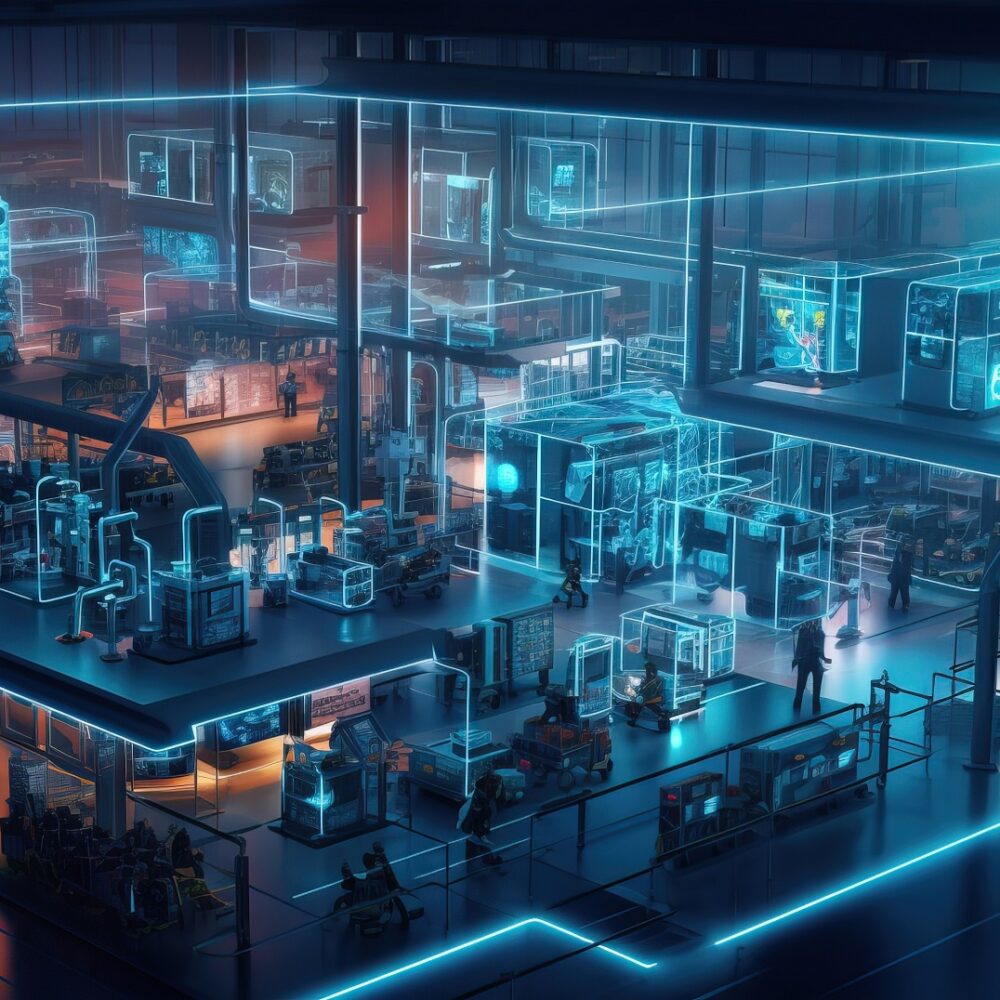
Structural steel designations
The designation of steel is based on letter and number symbols that describe its most important characteristics. According to EN 10027-1, the full steel symbol can be divided into three fields:
- the first field contains a capital letter indicating the use of the steel (e.g. S- structural steel) and a numerical designation of the yield strength in N/mm2 (e.g. S235);
- the second field includes symbols describing the quality group of the steel (fracture toughness) and symbols providing additional information about its intended use (atmospheric corrosion resistance, for quenching, for cold forming);
- the third field provides the requirements for the finished product and appears optionally, preceded by the ‘+’ sign.
Structural steel grades and types
The grades and types of structural steel strongly depend on their chemical composition. The following grades of structural steel (denoted by the letter S) can be listed for general and industrial construction:
Non-alloy structural steels
Non-alloy steels are those in which the mass concentration of individual elements does not exceed certain limits, which are defined in EN 10020.
These are the structural steel grades designated S235, S275, S355 and S460. The use of structural steel from this group is the most common.
Fine-grained structural steel grades after normalising or normalising rolling
Grades designated as S275, S355, S420 and S460. All of them can belong to a group with a specified minimum value of impact action at temperatures above -20°C (quality group N) or above -50°C (quality group NL). Products made from these steels are supplied in the normalised condition achieved by rolling with normalisation, and the appropriate addition of aluminium ensures that these steels are fully tempered.
Weldable fine-grain structural steels after thermo-mechanical rolling
Grades designated as S275, S355, S420 and S460. All products can belong to quality group M (specified impact test value above -20°C) or to group ML (above -50°C). These steels undergo a thermo-mechanical rolling process which allows for considerable strength and high resistance to fracture (impact resistance). Furthermore, due to its chemical composition, it is a weldable steel.
Structural steels with high corrosion resistance
They are available in grades S235 and S355, in quality groups J0, J2 and K2 (these refer to the temperature at which the specimen is subjected to impact, which describes the fracture toughness of the steel). Enhanced resistance to atmospheric corrosion is achieved by the addition of elements such as phosphorus (P), chromium (Cr), copper (Cu), nickel (Ni) or molybdenum (Mo).
Steels with improved yield strength
These are grades that can be described as higher quality structural steels. These include such as grades as: S460, S500, S550, S620, S690, S890 and S960 and are described in the sixth part of Eurocode EN 10025. They are all steels that are quenched which means the complete elimination of oxygen from its composition. This process significantly affects the strength properties of the steel. In addition, additions of elements such as niobium (Nb), vanadium (V) or titanium (Ti) allow such significant yield stress values to be obtained.
Steels for hot-rolled hollow sections (tubes)
For the production of hot-rolled square, round or rectangular tubes, unalloyed and fine-grained steel is used after normalisation. The symbols of these grades is similar to those mentioned earlier, except that an ‘H’ (hollow section) is added to the end of the grades designation.
Steels for cold-formed hollow sections (tubes)
Cold-formed hollow sections are made of unalloyed and fine-grained structural steels. The grades, symbols and quality groups of these steels are similar to those mentioned in the first two paragraphs. The designation of the steel grade for closed cold-formed sections also includes the letter ‘H’ at the end (e.g. S235JRH). Cold-formed sections are profiles whose walls do not exceed a thickness of 30 mm and manufacturing tolerances are specified in EN 10219.
Free machining steel
Due to its specific characteristics, it is used in steel constructions. By increasing the phosphorus (P) and sulphur (S) content, the properties of auto-steel, such as machinability and chip breakability, are improved, which are used directly in the steel processing. Ease of machining comes at the expense of mechanical performance. Therefore, the free machining steel is used for parts produced in very large quantities that are not subject to significant impacts (drawn bars).
It should be noted that the supply conditions for all the above-mentioned structural steels are described in EN 10025-1.
Chemical composition of structural steels and mechanical properties
The term ‘steel’ is used to describe a material that contains more iron by weight than any other element and has a carbon (C) content of less than 2%. And it is the effect of carbon on the mechanical properties of steel that is most apparent. It affects the brittleness of this material, its weldability or cracking performance.
The properties of structural steels closely depend on their chemical composition. This means that:
- unalloyed steels are those alloys whose individual elemental content is defined by EN10020. The properties of unalloyed steels are mainly determined by their carbon content and their crystal structure,
- corrosion-resistant steels contain at least 10.5% chromium (Cr) and no more than 1.2% carbon (C),
- other alloyed steels that do not meet the requirements of unalloyed and corrosion-resistant steels. Among these are low-alloy, medium-alloy and high-alloy structural steels.
In addition to the chemical composition, the properties and use of the steel are determined by its microstructure. The original crystal structure changes as a result of the product being subjected to manufacturing processes. The microstructure depends mainly on the heat treatment (annealing, hardening, tempering, supersaturation and ageing). It is also influenced by the chemical properties of the steel. In addition, the behaviour and load-bearing capacity of steel members are influenced by the main mechanical properties: yield strength, tensile strength, elongation, impact strength or hardness. The material constants: Young’s modulus, Kirchoff’s modulus, Poisson’s number and bulk density of steel also play an important role.
Applications of structural steel
Every material used in construction and civil engineering has its optimum range of application. The use of structural steels is closely linked to their basic characteristics, which include:
- endurance,
- ductility,
- resistance to cracking,
- plastic properties,
- chemical composition (affects weldability of steel, corrosion resistance or ease of galvanisation),
- formability (hot and cold)
- price.
The properties of steel and the use of components made from it are closely linked. Generally speaking, building structures can be divided into three groups based on the principles of their design or their components:
1. Bar structures whose main structures are linear elements in the form of beams, columns or arches. They can form more complex planar or spatial support systems (trusses, frames or bar assemblies). They are used to build:
- production halls and storage halls,
- public halls and pavilions,
- the frameworks of multi- or multi-storey buildings,
- bridges, viaducts, footbridges,
- special structures (towers, masts, support structures)
- demountable and temporary structures.
2. Suspension, cable-stayed structures used for long spans, sports halls, pavilions, suspension and suspension bridges.
3. Steel sheet shell structures used in the design of tanks, pipelines, silos, stacks.
Industrial steel structures (including production halls and warehouses) are included in the first group of structures.



